French 18th furniture is often held up as an examplar of luxury and quality, when money, fashion, commercial creativity and patronage combined perfectly to generate some of the greatest works of art made in that century anywhere in the world. Today some of the finest collections of 18th-century French furniture are found in Britain. During the French Revolution and through the decades after 1792, quantities of furnishings and objects came onto the market in France, often sold at knock-down prices. Many of these precious objects were eventually sold to British buyers: Britain was the nearest, richest and safest market for selling these great works of the Ancien Regime, when these objects were politically discredited in their native country. Since the early nineteenth century the state and French collectors in France and elsewhere have tried to bring back great examples of French 18th century furniture. Madame Pinault spearheaded a campaign organised by the Amis de Versailles to buy the spectacular commode from Louis XVIs library at Versailles, sold by the heirs of Barons Nathaniel and Albert von Rothschild, Theresianumgasse, Vienna, at Christie's in 1999 for £7m: Riesener commode.
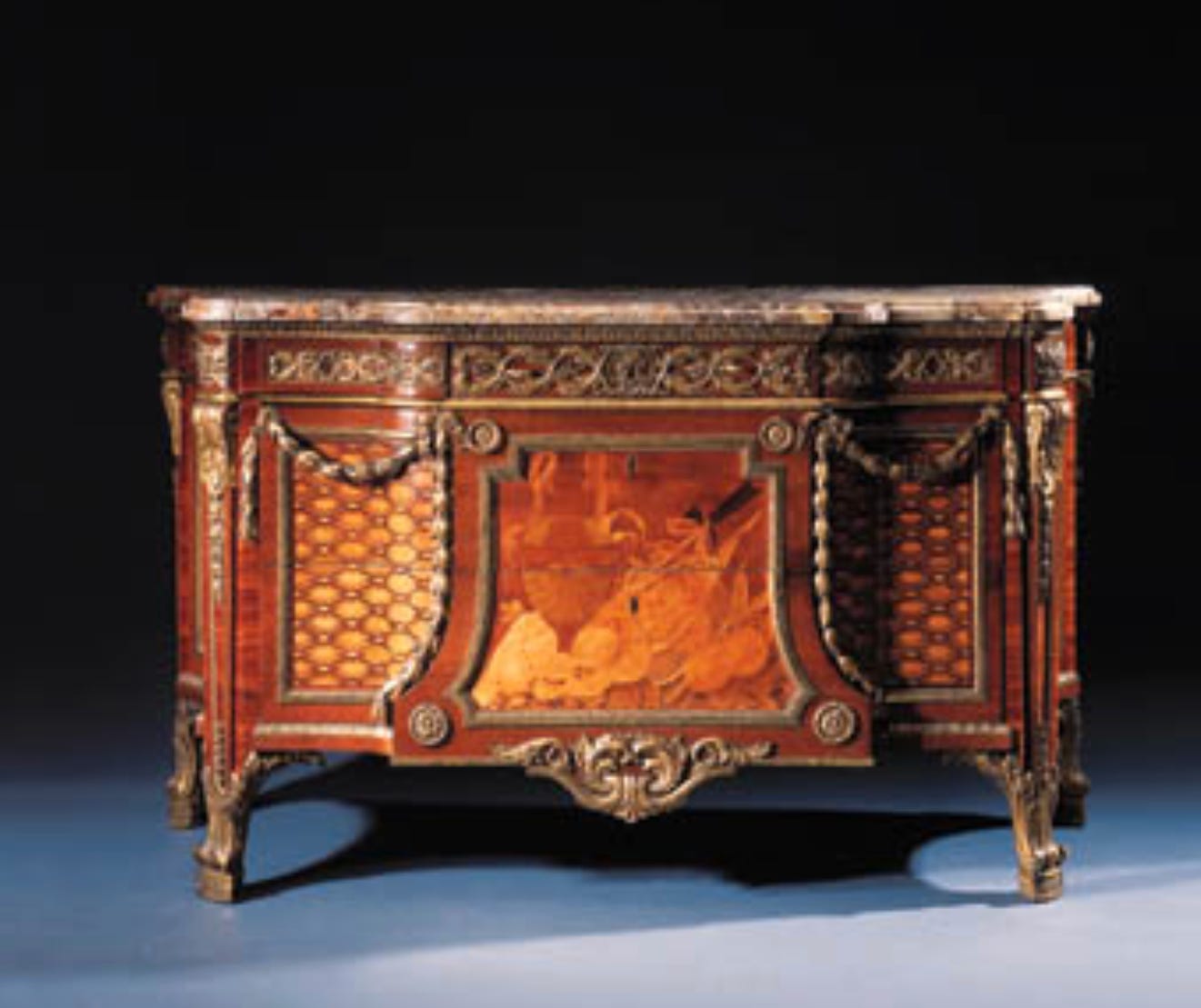
However, it is in Britain where some of the greatest objects and collections of French 18th century furniture remain. Most of these collections were formed in the 19th century thanks to the dispersal of works brought about by the Revolution in France in the 1790s. George IVs collecting of French works was prodigious and transformed the Royal Collection; the 3rd and 4th marquess of Hertford's collections formed the nucleus of The Wallace Collection in London; Ferdinand de Rothschild's collection at Waddesdon Manor is justly renowned. And there were many other great collections built up in the 19th century now dispersed: William Beckford, George Watson Taylor, the duke of Hamilton, the Hillingdon collection, Lionel de Rothschild to name just a handful. Many of these collectors were recently rich (eg William Beckford and Watson Taylor), others, part of a longer collecting tradition. Across the Atlantic, collectors were also drawn to the furniture and obects of the Ancien regime : the collecting of French furniture was enthusiastically taken up by similarly newly-wealthy Americans in the late 19th and 20th centuries. Collectors like Frick, Huntington, DuPont, Vanderbilt, Mellon, Rockefeller - many of whose names are today linked to great national and regional museums all owned masterpieces of French 18th century furniture. It seemed like it was a pre-requisite for any collector to own great French 18th century furniture. Collecting French 18th century furniture and objects in this 'grand tradition' continues today. Leading figures in the fashion world such as Yves Saint Laurent and his partner Pierre Berge, Hubert de Givenchy and Karl Lagerfeld all collected great pieces of French 18th century furniture in the later 20th century. The recent dispersal of the spectacular contents of the Hotel Lambert, Paris from the collection of Sheikh Hamad al-Thani, part of the ruling family of Qatar demonstrates that the passion for these great works continues today undiminished. Why?
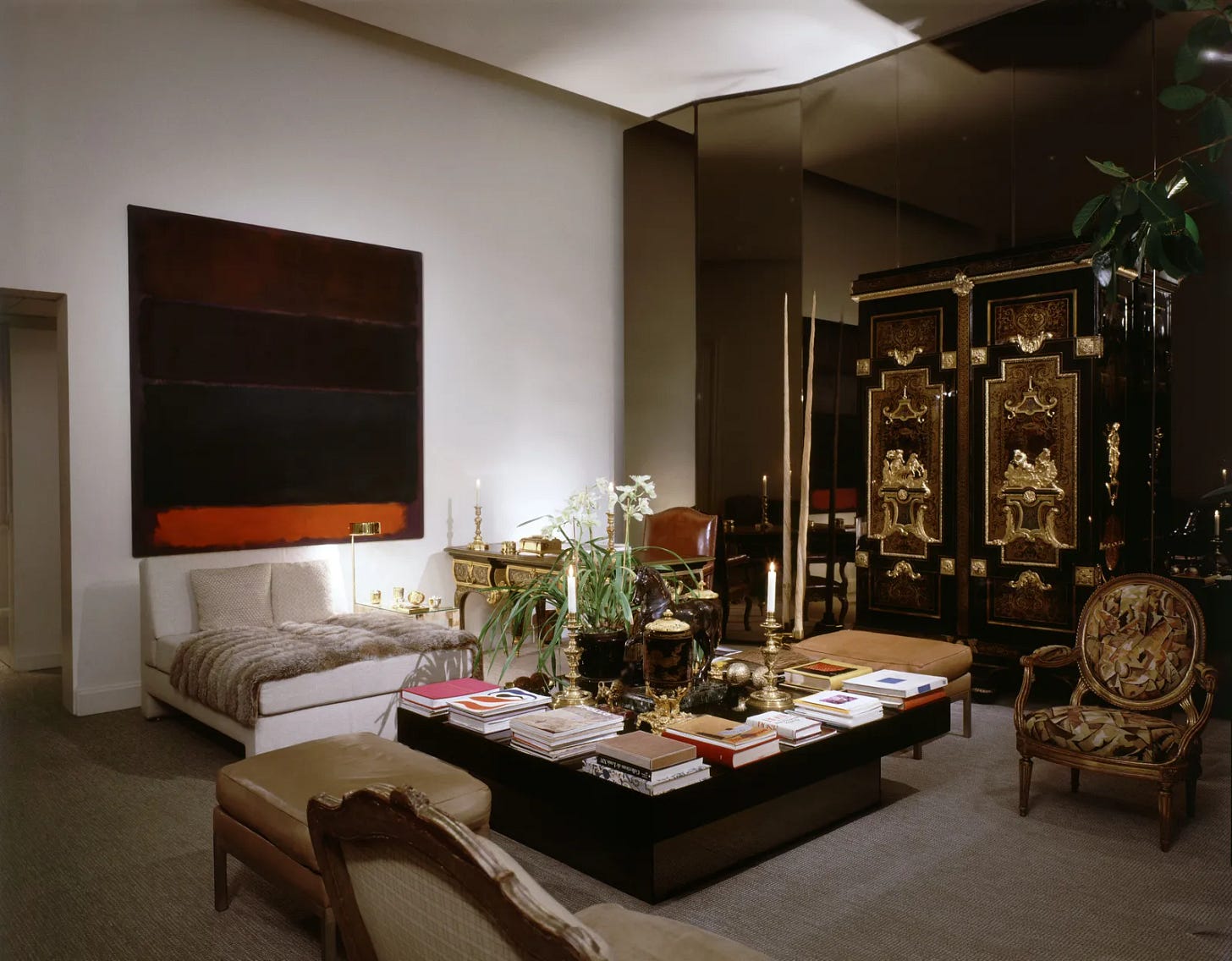
I will return to the question of why 18th century French furniture continues to exert such a strong hold on collectors. But in this post I am going to look at French furniture in England before 1800. If England is today a major repository of great pieces from the Ancien Regime, when did it start to arrive, and why ? Perhaps we can understand more about these pieces if we return to the century in which they were first made? Almost every signficant country house up and down Britain contains a splendid example of French furniture: Chatsworth, Bowhill, Castle Howard, Woburn, Blenheim etc. However, as mentioned above in contrast to the present holdings in Britain, not much arrived before the French Revolutionary sales of 1793 onwards but large quantities arrived after the cessation of hostilities with France in 1814. I often wonder what British country houses and palaces might have looked like before this largely 19th century influx of French furniture and works of art.
There are, it seems, just a handful of British collectors, whose collections survive partly intact today, who bought French furniture before the turn of the 18th century.
Broadly, these collectors fall into two groups: the obsessives and the diplomats. The two groups are not mutually exclusive, as often someone sent on a diplomatic mission returned as an obsessive. Owing to the tumultuous events of the middle years of the 17th century in Britain, namely the events of the English Civil Wars, very few collections of significance of furniture and decorative art survive from before 1650. Indeed, the royal collection was almost entirely sold off during the Commonwealth, and it was Charles II who upon his restoration to the throne in 1660 was forced to begin the royal collection again from scratch (for more on this see Charles II: Art & Power). His ambassador - or plenipotentiary - Ralph Montagu, 1st duke of Montagu (1638-1709), was in Paris in 1662-63 and again, off and on, from 1669-1672. It is thought that he brought back not only furniture from Paris, to show off in his smart London house, Montagu House (on which site the British Museum now stands), but also talented French craftsmen, and employed them to work for himself and as suppliers to the Great Wardrobe, the department of the Royal Household responsible for furnishing the official or state areas of the royal palaces and Ambassador's residences. Ralph Montagu was the holder of the sinecure post, Master of the Great Wardrobe, a senior courtier position which gave him influence at court, an income and control over suppliers of furnishings, and almost certainly allowed him to charge for the right to be a supplier. It may be through Montagu's influence as Master of The Great Wardrobe that French furnishing fashions, as promoted by Louis XIV and his chief minister Colbert, were introduced at Charles II's court. However, apart from some spectacular (and very rare) silver furniture, almost nothing from this period survives in the royal collection. By contrast, at Boughton House, Northamptonshire, several pieces of superb 17th century furniture survive, almost certainly those items brought from France to England by Ralph Montagu.
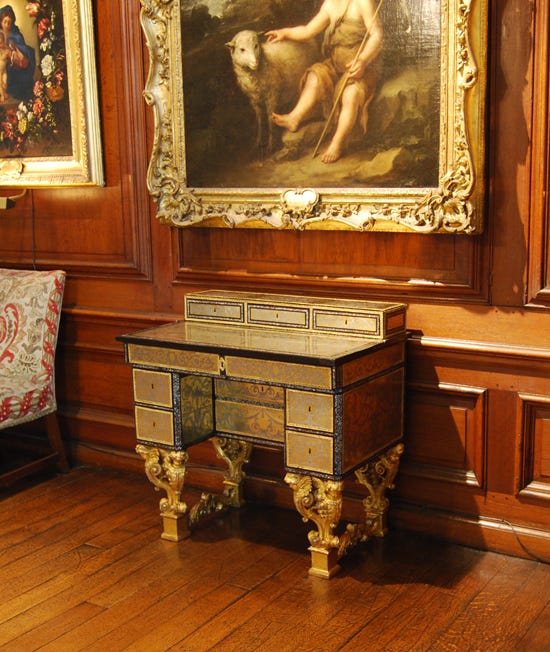
Although few pieces of 17th century furniture survive in the the royal collection today: which is largely due to the operation of the system of royal perquisites, where certain senior courtier posts were permitted, usually on the death of the king or queen, to remove the contents of certain rooms in the royal palace. For example, the Lord Great Chamberlain was permitted to claim some of the royal furniture made for a coronation, and the Lord Chamberlain was permitted to claim the furnishings of the certain parts of a royal palace after the death of the monarch (the 4th duke of Devonshire was Lord Chamberlain 1757-62 at the time of George II's death, which is why George II's state bed was taken to Chatsworth). By the 19th century, the perquisites system was considered incompatible with modern methods and was abolished when Prince Albert reformed the Royal Household in the 1840s.
As a result of the perquisite system, a number of pieces of furniture which belonged to James II ended up at Knole, the family seat of the Sackville family. Some of these pieces (including the 'King's Bed') are thought to have been presented to James, duke of York (later James II) and his second wife Mary of Modena at the time of their wedding in 1673. Although James was not yet publicly 'outed' as a Roman Catholic, Mary most certainly was, and it is likely that the bed and its magnificent and costly hangings, along with a matching pair of armchairs, six stools and a pair of frames for upholstered squabs, were presented by Louis XIV to the duke and duchess of York. The furnishings remained either at St James's Palace (where the Yorks kept a sumptuous apartment) or at Whitehall Palace (where the Yorks had another sumptuous apartment) and were later claimed by Charles Sackville, 6th earl of Dorset (1638-1706) as Lord Chamberlain in 1694, following the death of Mary II. Charles Sackville was also in France, sent as Ambassador by Charles II in 1669-70 to negotiate the secret treaty of Dover, an agreement between Charles II and his 1st cousin Louis XIV where Charles promised to return England to the Catholic faith in return for a large annual sum (from which Charles was able to wage war against their common enemy the Dutch, in the 3rd Dutch war of the 1673-4 and later to rebuild Windsor Castle in magnificent style).
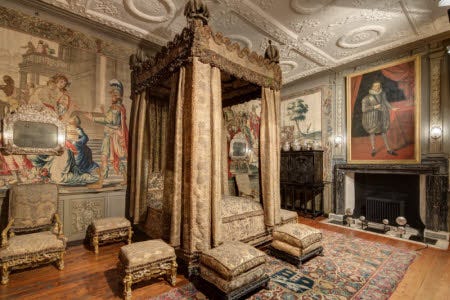
In the following century, various noblemen were sent to France as Ambassadors, and some spent lavishly in Paris bringing French porcelain and furniture to England. John Russell, 4th duke of Bedford was appointed Ambassador to France 1762-63, at the end of the Seven Years' War, with Britain victorious, he was responsible for signing the Treaty of Paris. The great Sevres dinner service at Woburn was given to him by Louis XV. It is also probable - though we cannot be certain, that he bought French furniture while there. Another Ambassador to France, Charles Lennox, 3rd duke of Richmond (d. 1805), ambassador 1765-66, when in France bought a small black and gold lacquer secretaire a abbatant, by BVRB, which had probably been made for Madame de Pompadour in 1757, and was recently sold from the Riahi collection at Christie's, London, 6 December 2012, lot 25.
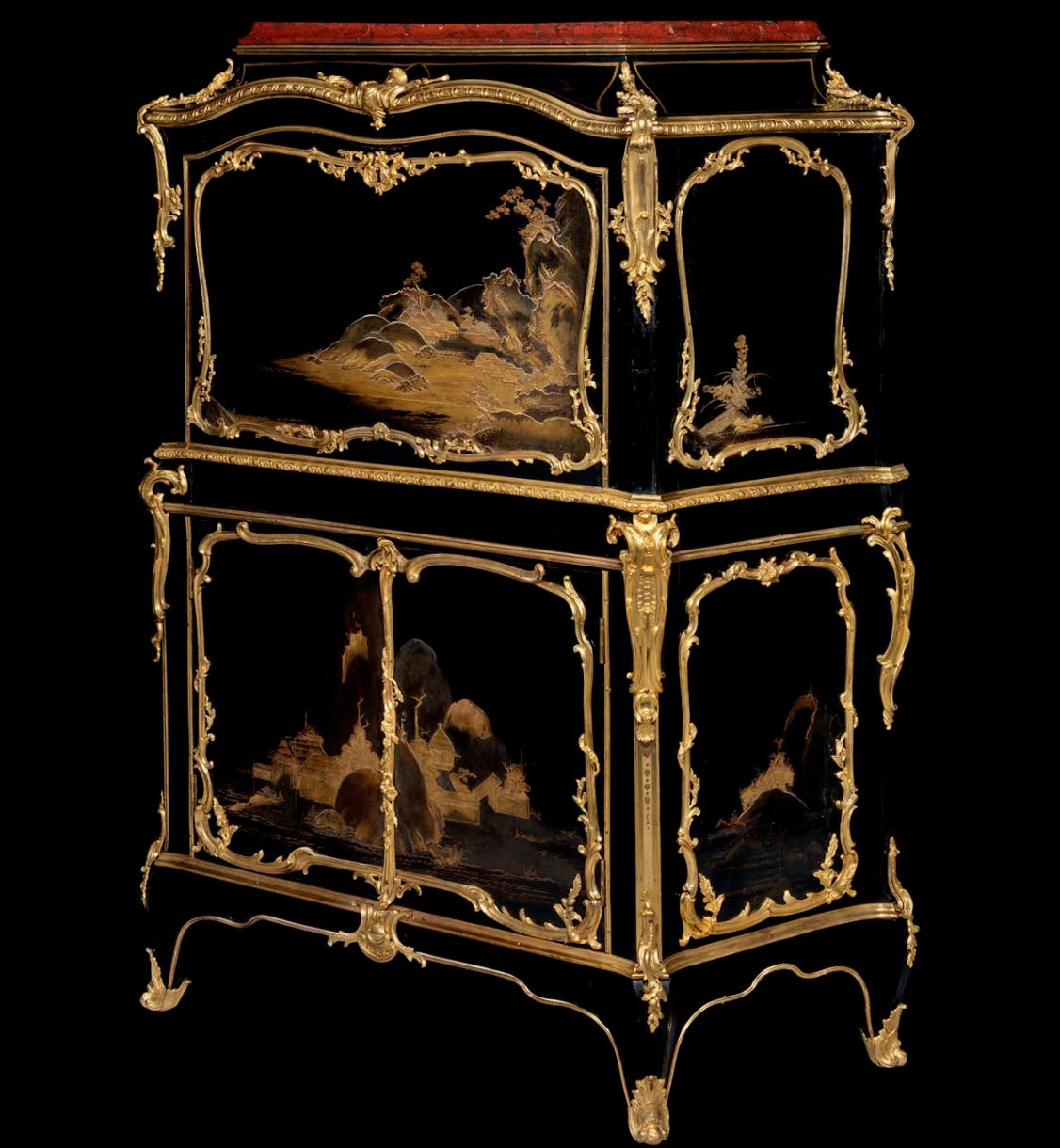
The Francophile George Coventry, 6th earl of Coventry (1722-1809) was in Paris on several occasions in the late 1750s and 60s making acquisitions for his new house, Croome Court (see A. Pradère, "Les Achats Parisiens de mobilier du Comte de Coventry", L’Estampille/L'Objet d'Art, No. 303, June 1996, pp. 47-53, ill. p. 48). He was probably an ‘obsessive’ - although an intelligent man and a politician, he was not a diplomat. Included in these purchases was a secretaire with gilt bronze mounts by BVRB and a severe neo-classical (or gout grec) commode, by Roger van der Cruse also known as Lacroix or RVLC. Perhaps most significantly, beside these purchases of furniture and some objects was the spectacular purchase of the set of six tapestries, designed by Francois Boucher, now installed in the new British Galleries at the Metropolitan Museum of Art, New York. The 6th earl ordered the set directly from the Royal Gobelins Manufactory in Paris in 1764, after the cessation of Anglo-French hostilities in 1763 formalised in the Treaty of Paris mentioned above.
At Boughton, there is a cabinet made for Jacques-Nicolas Colbert in Boulle marquetry, which may have come to England through the hands of the dealer Pierre Remy, who purchased it at the duc de Tallard’s sale in 1756 noting it was ‘pour l’Angleterre’. It was subsequently sold to George Montagu, 4th earl of Cardigan and later 3rd duke of Montagu (1712-1790). It stands on an English 18th century stand, suggesting that the cabinet was indeed brought to England in the 1760s (see M. Jackson, ‘Boulle abroad…’ Techne, no, 49, 2020, p. 20).
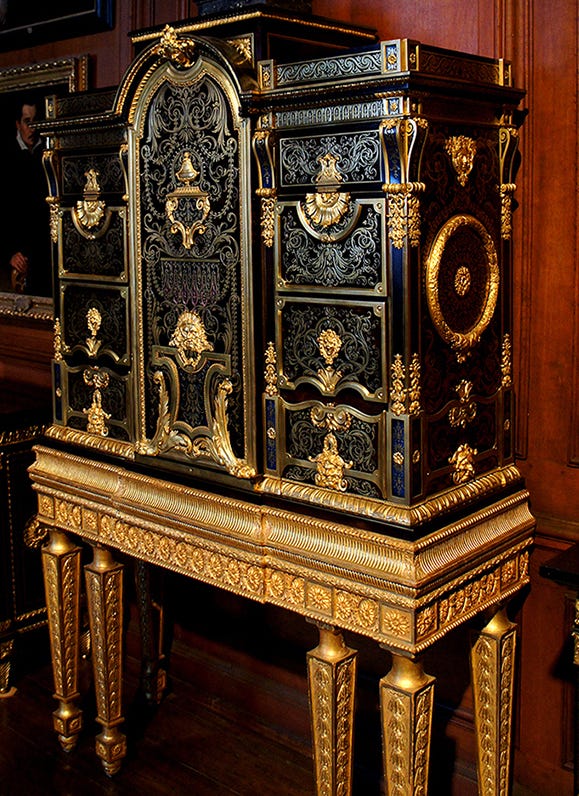
In the 1780s, George, Prince of Wales reached his majority and was given Carlton House. This set in train a lifelong spending spree, much of which was spent not on paintings (though this area was by no means neglected) but on French furniture, Sevres porcelain and English silver. In the decade after 1783, when he was given his grandmother's residence, Carlton House, he was surrounded by a small group of francophile advisors, including the dealer Guillaume Gaubert - who was soon replaced by Dominique Daguerre - and Henry Holland. In the 1790s, Daguerre organised a number of sales at Christie's - which probably included pieces which had come direct from Parisian hotels particuliers (private Parisian residences). It's possible that George bought a beautiful commode (or cabinet) with pietre dure panels by Adam Weisweiler at this sale. It could also have been the case that Daguerre asked Weisweiler to make this commode specially for inclusion in that sale at Christie's - and may even have encouraged George to buy at the sale RCIN 2593
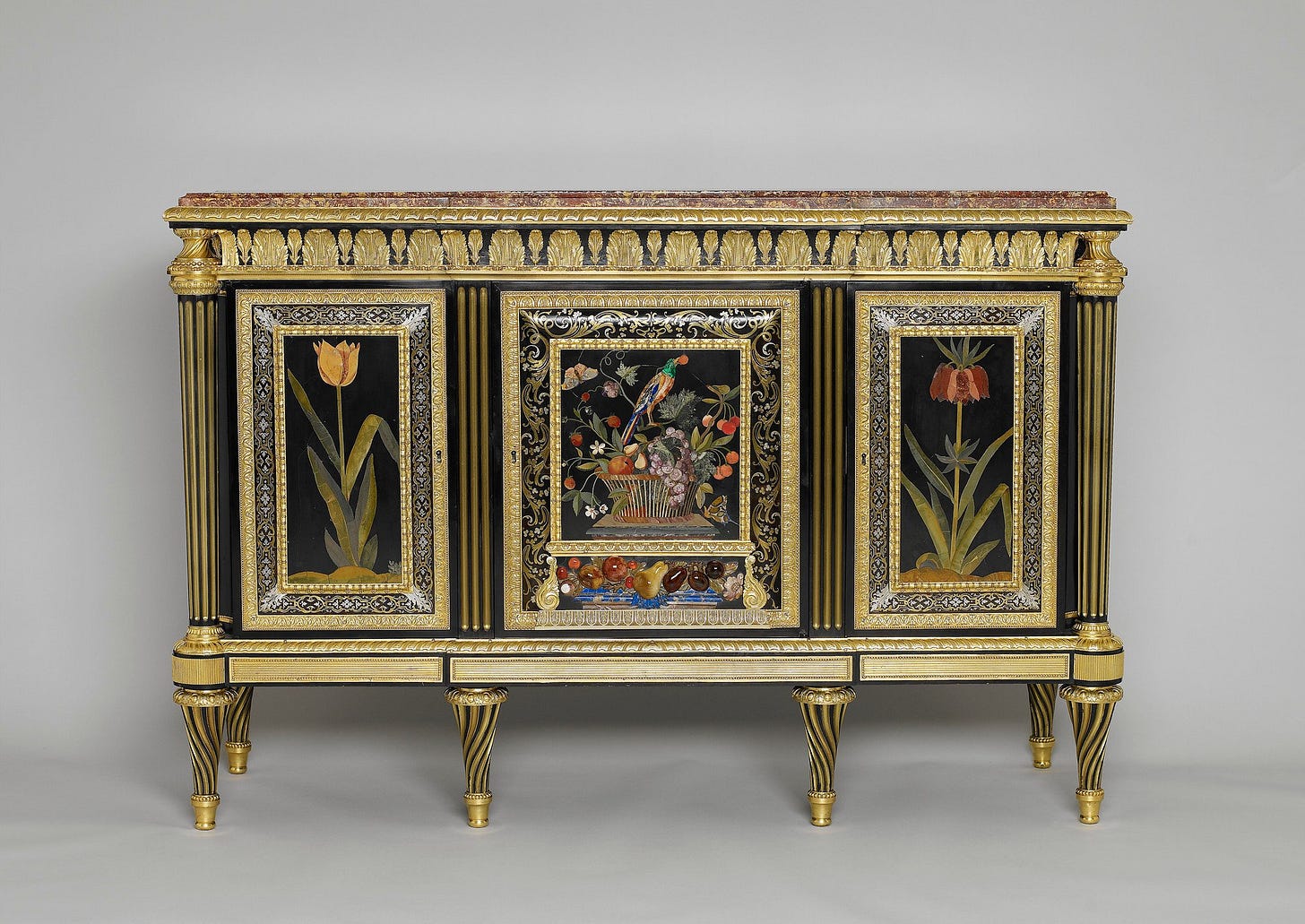
A piece of furniture which may have arrived at Carlton House before the piece mentioned above is a cabinet mounted with panels of Sevres porcelain, made by Martin Carlin - another major collaborator with Dominique Daguerre. It is recorded in the Saloon at Carlton House in January 1793 RCIN 21697.
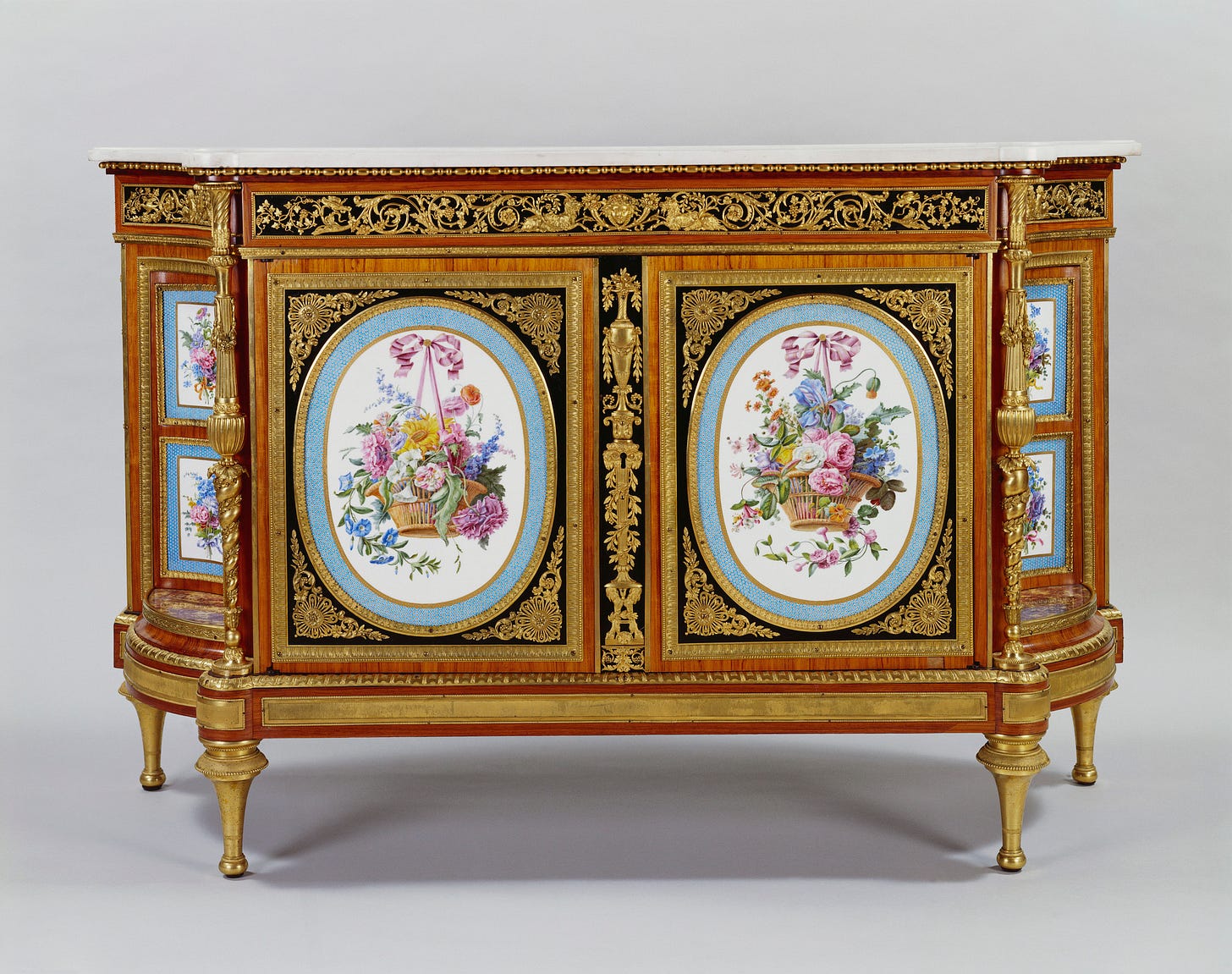
Finally, mention should be made of the renowned diplomatist James Harris, 1st earl of Malmesbury (1746-1820), who spearheaded diplomatic missions from Britain to Spain, Berlin, St Petersburg, The Hague and Paris where he was sent by Pitt in 1796 when France was governed by the Directory. While in Paris, it seems Lord Malmesbury took time to go shopping and noted in his diary that he visited the shop of the famous marchand mercier Lignereux on 17 November 1796 where he made some purchases; by the following February he still owed Daguerre - Lignereux 2,040 livres. He sent back to England a sumptuous writing-table with cartonnier by Joseph Baumhauer - entirely appropriate for a man of influence such as Lord Malmesbury. This magnificent table was recently sold by Lily and Edmond J. Safra at Sotheby's New York, 3 November 2005, lot 120.
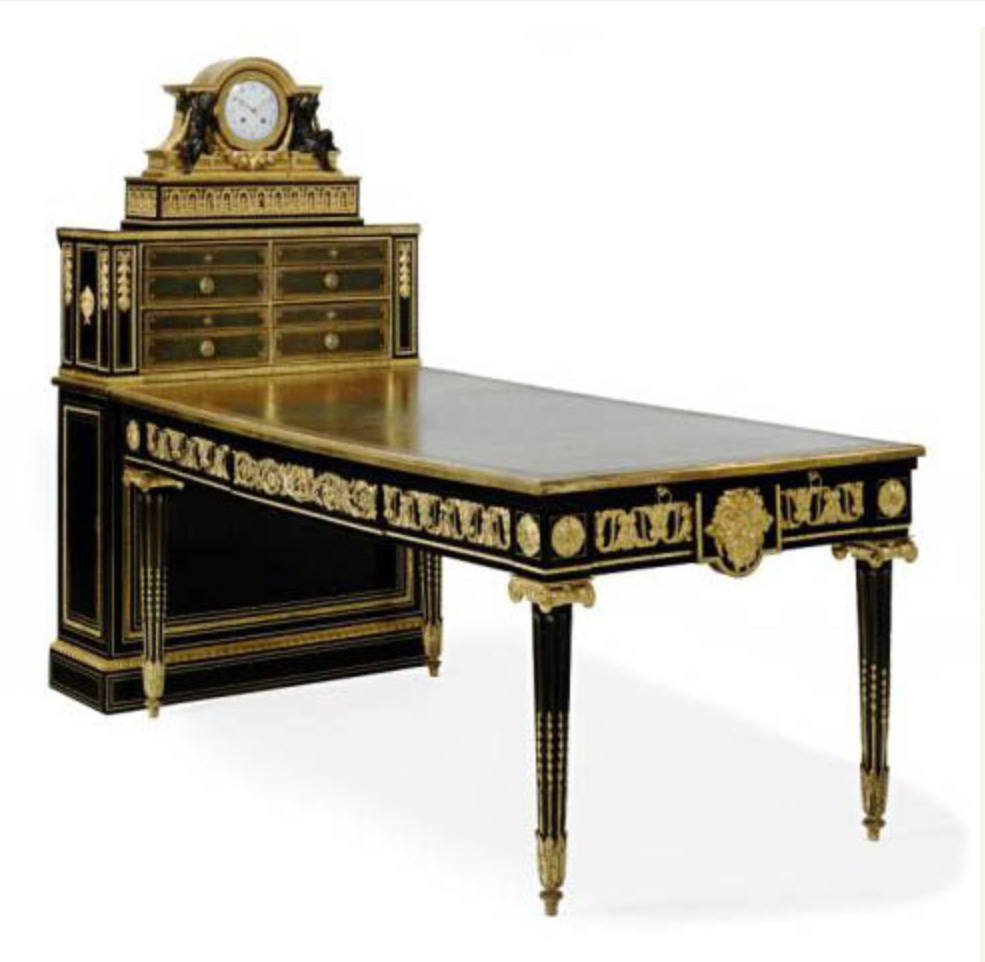
Once the revolution in France was underway and it was no longer possible to be seen to own property which indicated luxury, expense or promoted the ideals of the Ancien Regime, or the property sold off after the execution of the owner, the auction rooms were full of great works of art, many of which were sold at far lower prices than pre-revolutionary times. Some speculated on these works returning to favour (for example the great jewel-cabinet by Jean-Henri Riesener made in 1787 for the King's sister-in-law, the Comtesse de Provence - which passed through several owners and was later twice rejected by Napoleon who favoured something new : Riesener jewel cabinet and Riesener trail and video). Many dealers (eg Rocheux, Lebrun, Bonnemaison, Maelrondt) bought up these pieces and sold them to clients in England, notably the 1st duke of Wellington, William Beckford and - through various links in a chain back to France - George, prince of Wales, later George IV, whose voracious appetite for French decorative arts was well served by the vast amounts of ancien regime objects coming onto the market. While George was one of the most profligate buyers of the first three decades of the nineteenth century, he was in good company - and it is from these years that some of Britain's great collections of French decorative arts were formed. Three important collections stand out - all formed throughout the nineteenth century. First, the Royal Collection's superb holdings of French 18th and 19th century decorative arts are largely thanks to the extraordinary purchases of George, prince of Wales. After his death in 1830, it was Richard Seymour-Conway, 4th marquess of Hertford (1800-1870), son of George IV's friend and fellow collector, the Earl of Yarmouth (later 3rd marquess of Hertford) who after 1829 spent most of his life in Paris and left his collection to his natural son Sir Richard Wallace : this collection, The Wallace Collection, is considered the greatest collection of French decorative art outside of Paris. In the 1870s Ferdinand de Rothschild's collection housed at Waddesdon Manor, Buckinghamshire provided another great collection of French decorative art (which includes a Sevres-mounted lady's writing desk given by George IV to his mistress, Lady Conyngham, who had a passion for porcelain-mounted furniture).





Excellent piece. Thank you, Rufus. I look forward to reading more.
Thank you for confirming my belief that London is a great place to see pre-revolutionary French furniture and objects. I've not yet visited many country houses in England, but I'm putting the ones you've mentioned on the list.